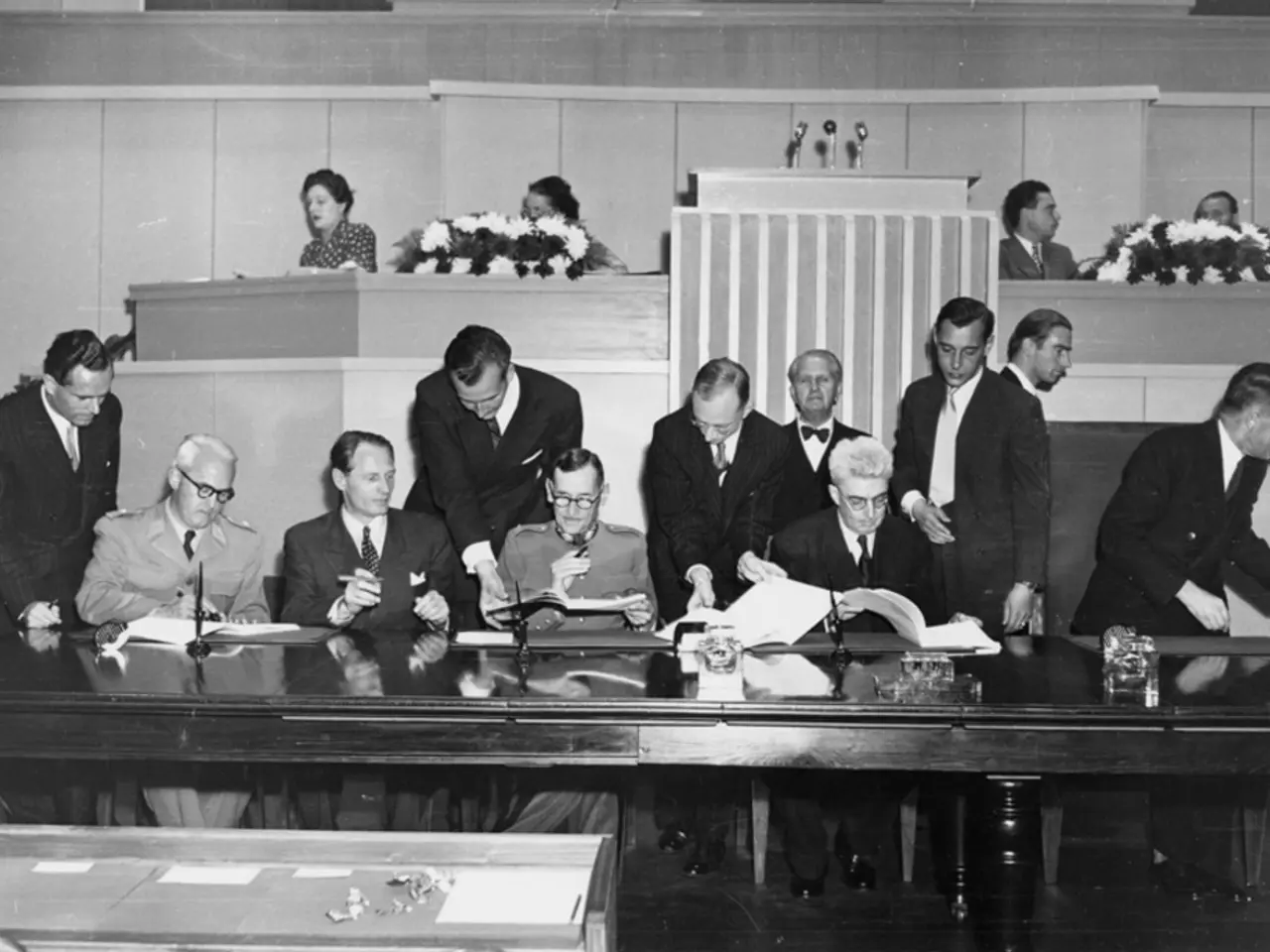Voyager's Ideal Counterpart: Seska, the Complex and Chaotic Character
In the vast expanse of Star Trek: Voyager, the character of Ensign Seska, played by Martha Hackett, stands out as a complex and intriguing antagonist. Unlike the multifaceted Cardassians on Deep Space Nine, Seska's role is more personal, serving as a recurring spy and betrayer within the Voyager crew.
Seska's character development unfolds as she masquerades as a Bajoran Maquis member before revealing her true identity as a genetically modified Cardassian. This revelation, which occurred in the episode "State of Flux," sets off a series of events that explore themes of trust, identity, and betrayal aboard Voyager.
Throughout the series, Seska's machinations lead to internal tension and external threats for the Voyager crew. In the two-part story "Worst Case Scenario," her legacy influences holodeck simulations and crew dynamics. However, her attempts to ally with the Kazon and get back at Voyager often fail due to her constant undermining and scorn from her newfound allies.
In contrast, the Cardassians on Deep Space Nine are portrayed as a central cultural and political force, with a wide range of depictions from brutal militarists and oppressors to nuanced individuals grappling with the consequences of war, occupation, and shifting alliances. The gradual reveal of Cardassian politics, military, and society provides a layered reflection of occupation, collaboration, and redemption that is explored over many seasons.
Seska's impact on Voyager is significant but episodic, whereas the Cardassians in Deep Space Nine have a sustained presence that shapes the series' central narrative on war, peace, and identity.
Despite being an episodic show, Voyager occasionally experimented with short-form arcs, and Seska's was one of them. Her death, which occurred in a story that is about the disruption of Voyager's community and a violation of their safe space aboard the ship, serves as a reminder of the importance of unity for the crew's survival.
As we commemorate the 30th anniversary of Seska's reveal, her character continues to be a fascinating study in deception and survival within a smaller crew context. Her legacy reminds us that even in the face of adversity, the strength of a united crew can overcome the most treacherous of obstacles.
- Io9 and Gizmodo have repeatedly noted the impact of Seska's character in the future of Star Trek television, with her complex portrayal of deception and survival serving as a striking comparison to the more expansive Cardassian presence on Deep Space Nine.
- Movies-and-TV critics have commented on the potential influence of Seska's storyline on contemporary television, with her recurring antagonist role and exploration of themes like trust, identity, and betrayal leaving a lasting mark on the entertainment industry.
- Technology has played a crucial role in Seska's character development, as her genetic modification is a theme that could be further explored in future Star Trek series, demonstrating the power of advanced technology to alter identity and shape the narrative of the show.








